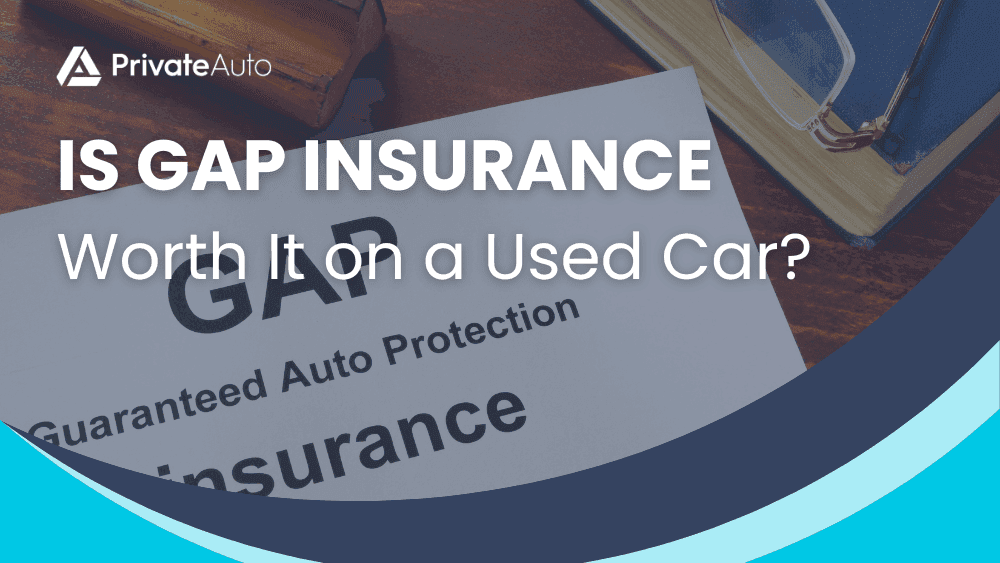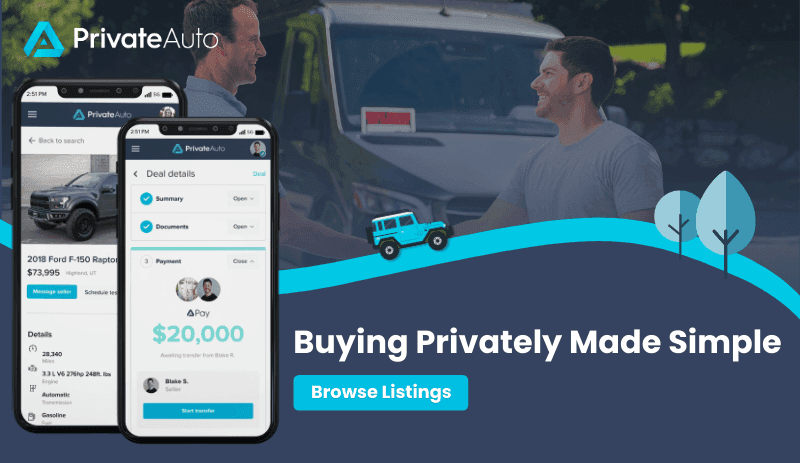Is Gap Insurance Worth It on a Used Car?
Buying a used car can be a smart financial move. After all, we've all heard the saying that a new car starts to lose its value as soon as it leaves the lot, generally to the tune of 20% every year. Meanwhile, a car in its second or third year will lose up to 85% of its previous year value, and that requires special considerations on your part if you're planning on financing a used car purchase.
The Math Behind Buying a Used Car
Financing a used car can help you buy a very nice, reliable vehicle that you might not afford out-of-pocket. Buying one or more model years older than the current model year will also save you money off the price tag, and can even help you score features or color options that aren't available on the current model year of the vehicle.
However, financing a used car requires careful consideration due to the speed at which most used vehicles depreciate. As soon as a new car leaves the lot, it's instantly down to about 91% of its original value. At the end of its first year, it's down to 81%. At the end of its second year, it's down to 69%. This process continues, making the typical $30,000 new car worth less than $12,100 five years after its purchase.
When you buy used, you can often get more for your money simply because you haven't paid the new price and suffered the instant first- and second-year depreciation. Instead, you may be able to get a $30,000 car for around $20,000 just a couple years into its life, and it will probably still be in excellent condition and perhaps still have active factory warranties. However, even if that sounds like a great deal, if you're financing a used car purchase, there are factors you must consider.
However, financing a used car requires careful consideration due to the speed at which most used vehicles depreciate. As soon as a new car leaves the lot, it's instantly down to about 91% of its original value. At the end of its first year, it's down to 81%. At the end of its second year, it's down to 69%. This process continues, making the typical $30,000 new car worth less than $12,100 five years after its purchase.
When you buy used, you can often get more for your money simply because you haven't paid the new price and suffered the instant first- and second-year depreciation. Instead, you may be able to get a $30,000 car for around $20,000 just a couple years into its life, and it will probably still be in excellent condition and perhaps still have active factory warranties. However, even if that sounds like a great deal, if you're financing a used car purchase, there are factors you must consider.
What Is Gap Insurance?
Your new-to-you used car may have sold for a great price, but if you're financing the purchase, the deal isn't cut-and-dry. Let's say that you buy a two-year-old car for $20,000, which could be a great price for the model if you pay out-of-pocket. However, if you finance it, your interest rate and repayment terms could easily turn you "upside down" on your loan.
Being upside down on a car loan means you owe more than the car is worth, and this is very common with used car financing. Your used car will continue to depreciate as it ages, often at a quicker rate once you hit the three- or five-year mark. Meanwhile, if you've opted to finance the purchase, the fair price the car was listed at will now cost you 5% to 15% more, depending on your interest rate.
For this reason, gap insurance exists to help cover the difference between what your used car is worth and what you owe on it. You can sometimes buy gap insurance at the time of the car purchase, or you may be able to add it to your existing auto insurance policy.
Being upside down on a car loan means you owe more than the car is worth, and this is very common with used car financing. Your used car will continue to depreciate as it ages, often at a quicker rate once you hit the three- or five-year mark. Meanwhile, if you've opted to finance the purchase, the fair price the car was listed at will now cost you 5% to 15% more, depending on your interest rate.
For this reason, gap insurance exists to help cover the difference between what your used car is worth and what you owe on it. You can sometimes buy gap insurance at the time of the car purchase, or you may be able to add it to your existing auto insurance policy.
Is Gap Insurance Worth It on a Used Car?
If you think you're fully protected just because you have good auto insurance and maybe even a solid extended warranty, that doesn't mean gap insurance isn't worthwhile. That's because, while extended car warranties help to cover unexpected repairs, they do nothing if you buy a used car and then get into an accident.
When you're in an accident or your car is damaged in some other way (e.g., a tree falls on it), your auto insurance will be wholly responsible for covering those costs, up to your plan limits and after any deductibles you've agreed to pay. Of course, if your insurance company says your used car is only worth $12,000, they may choose to "total" the vehicle and pay that amount to you in cash rather than pay to repair the vehicle.
Older vehicles are often "totaled" by insurance companies when the repair cost is near or more than the book value of the car. If that happens, you'll walk away with money in hand, but the issue is that you're still making monthly payments on the car, and if the book value is less than you owe, you will not be able to pay off your used car loan. This is where gap insurance kicks in.
Gap insurance will help cover the costs of paying off your loan and perhaps even give you some breathing room to get a new car in the instance that your car is totaled. For example, if you owe $20,000 on a car that your insurance company totals for $12,000, gap insurance may pay off the $8,000 difference for you.
When you're in an accident or your car is damaged in some other way (e.g., a tree falls on it), your auto insurance will be wholly responsible for covering those costs, up to your plan limits and after any deductibles you've agreed to pay. Of course, if your insurance company says your used car is only worth $12,000, they may choose to "total" the vehicle and pay that amount to you in cash rather than pay to repair the vehicle.
Older vehicles are often "totaled" by insurance companies when the repair cost is near or more than the book value of the car. If that happens, you'll walk away with money in hand, but the issue is that you're still making monthly payments on the car, and if the book value is less than you owe, you will not be able to pay off your used car loan. This is where gap insurance kicks in.
Gap insurance will help cover the costs of paying off your loan and perhaps even give you some breathing room to get a new car in the instance that your car is totaled. For example, if you owe $20,000 on a car that your insurance company totals for $12,000, gap insurance may pay off the $8,000 difference for you.
When and How Much Will Gap Insurance Pay?
Buying an extended warranty is generally a good idea on a used car, because if you're heading to the repair shop for just about any reason, your gap insurance won't matter.
The only time your gap insurance kicks in is when your insurance company has totaled the car and paid you less than what you owe on your auto loan. So, it's worth looking into a parts warranty, or for something more extensive, consider bumper-to-bumper warranties, powertrain warranties, or vehicle service contracts.
If you already have coverage, you should look into what your warranty covers and when your warranty expires. It's also a good idea to consider add-ons to your policy or warranty for things like roadside assistance. Setting aside savings for deductibles for covered repairs and uncovered repair costs will also help protect your finances and give you peace of mind.
The only time your gap insurance kicks in is when your insurance company has totaled the car and paid you less than what you owe on your auto loan. So, it's worth looking into a parts warranty, or for something more extensive, consider bumper-to-bumper warranties, powertrain warranties, or vehicle service contracts.
If you already have coverage, you should look into what your warranty covers and when your warranty expires. It's also a good idea to consider add-ons to your policy or warranty for things like roadside assistance. Setting aside savings for deductibles for covered repairs and uncovered repair costs will also help protect your finances and give you peace of mind.
Find the Right Used Car Deal
Thinking about financing a used car? Are you already making payments on a vehicle? Gap insurance is a smart thing to look into, whether you add it to your current auto insurance policy or purchase it through a third party. Of course, one of the best ways to protect your finances is to invest in a car that will hold its value.
If you're thinking of buying or selling in the near future, consider PrivateAuto to be your one-stop solution. With tips for buying and selling in every state, along with a test drive scheduler, secure online communication, and state documents that are ready to sign, getting into your next ride couldn't be easier. Click here to learn more and start shopping today.
If you're thinking of buying or selling in the near future, consider PrivateAuto to be your one-stop solution. With tips for buying and selling in every state, along with a test drive scheduler, secure online communication, and state documents that are ready to sign, getting into your next ride couldn't be easier. Click here to learn more and start shopping today.



